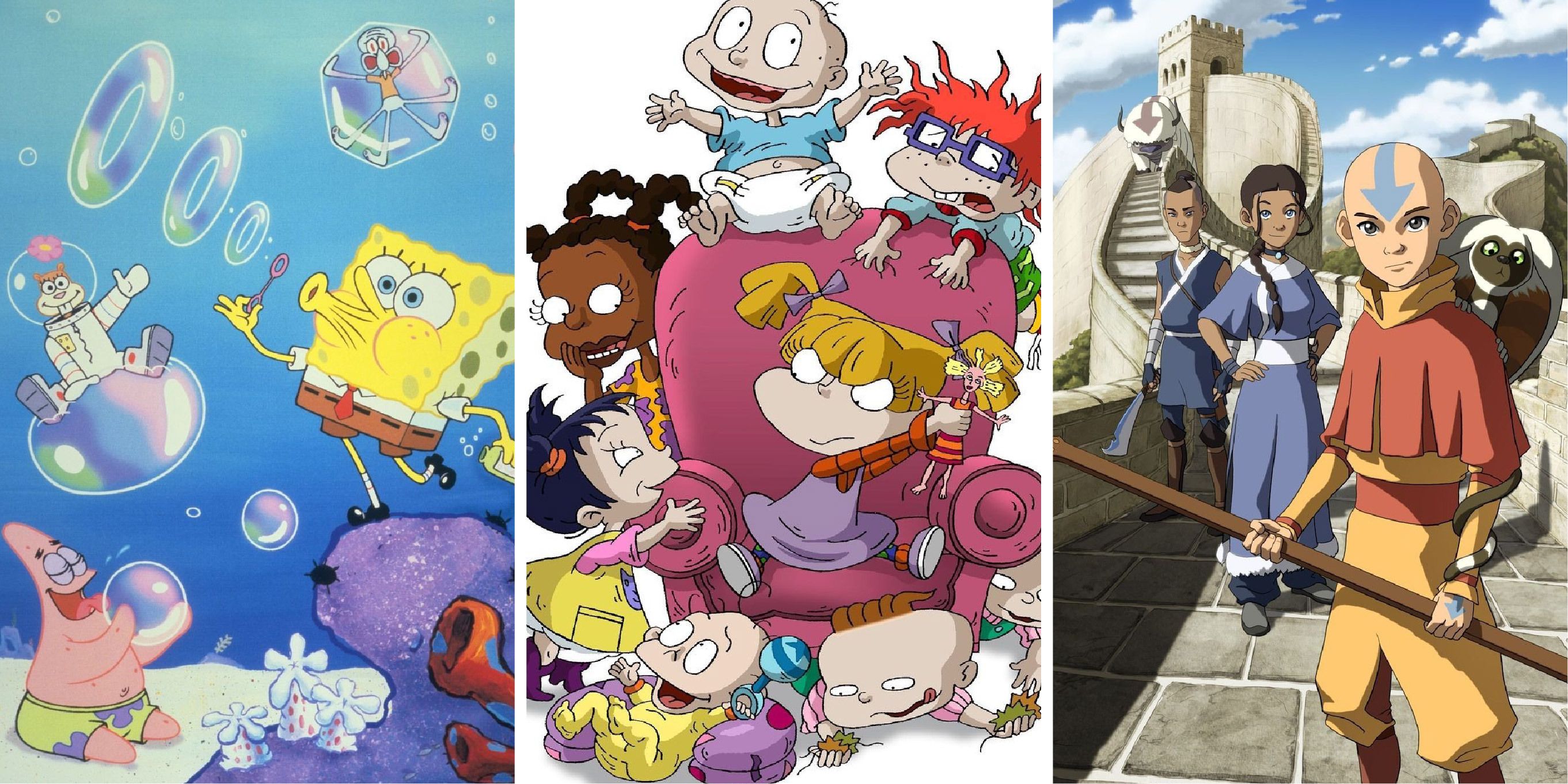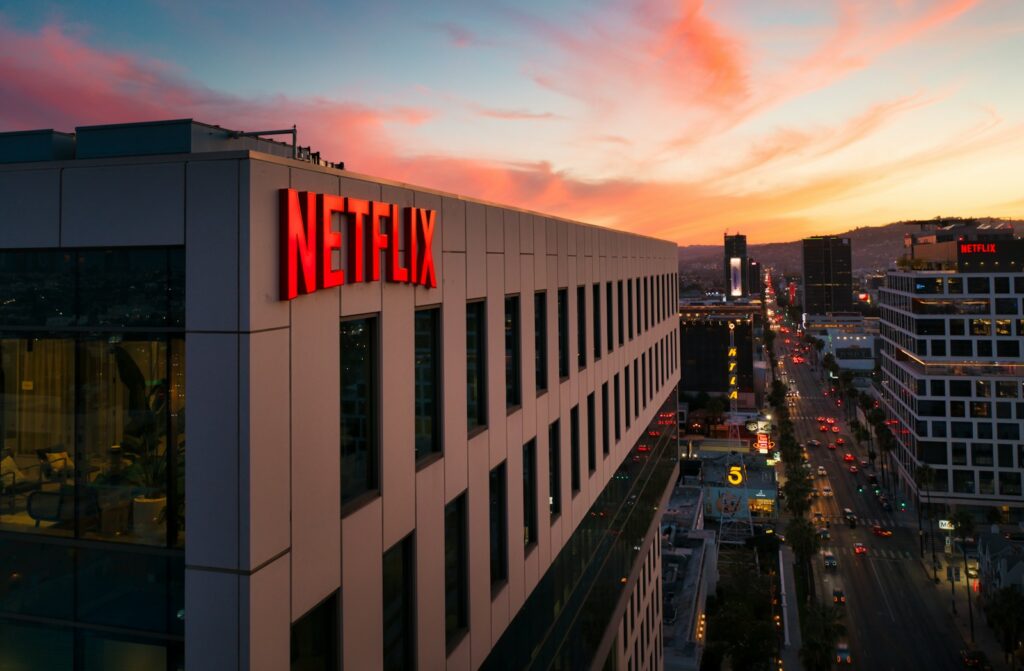
From its experimental beginnings to its status as a cornerstone of children’s entertainment, Nickelodeon has played a defining role in shaping youth media in the United States. Officially launched on April 1, 1979, it became the first cable channel in the country created specifically for children, catering to viewers aged 2 to 17 while also engaging broader family audiences through segmented programming.
Nickelodeon’s roots trace back to December 1, 1977, when it began as a test broadcast under the name “Pinwheel.” This early format operated within QUBE, an innovative two-way interactive cable system developed by Warner Cable Communications in Columbus, Ohio. The program “Pinwheel” aired exclusively on the C-3 cable channel from 7:00 a.m. to 9:00 p.m. Eastern Time. Its singular presence on the channel led remote controls to label the entire channel as “Pinwheel,” underscoring its dedicated content approach.
Although an initial launch was planned for February 1979, the nationwide rollout under the name Nickelodeon took place on April 1, 1979. The channel was transmitted to Warner Cable systems via satellite through the RCA Satcom-1 transponder, significantly expanding its distribution. Initially operating without commercials, the network shifted its business model in January 1984 by introducing advertising. This transition was accompanied by a comprehensive rebranding in both programming and visual identity. The strategy proved highly effective and played a critical role in Nickelodeon’s eventual acquisition by Viacom in 1985, alongside MTV and VH1, marking a transformative moment in youth-oriented media.
Following the Viacom acquisition, Nickelodeon adopted an aggressive growth strategy centered on franchise development and targeted programming. One of the most notable initiatives was the introduction of Nick Jr. on January 4, 1988, a morning block tailored to preschool-aged children. Its strong reception led to the creation of a standalone Nick Jr. Channel in 2009, further solidifying Nickelodeon’s commitment to younger audiences and enhancing its brand presence across demographic segments.

Expanding the Brand:Nickelodeon’s Diversification Through Specialized Channels
Reinforcing its investment in original animated programming, Nickelodeon launched a dedicated channel under the Nicktoons brand in 2002. Initially named Nicktoons TV, the channel underwent several rebranding phases before reverting to the Nicktoons title in 2009. This platform showcased both recent live-action and animated content from Nickelodeon’s primary network, as well as exclusive original series. The strategic expansion strengthened Nickelodeon’s influence in the animation industry by offering a curated space for proprietary programming.
Another notable initiative was the introduction of Noggin, an interactive educational brand developed in partnership with Sesame Workshop. Operating as a television channel from 1999 to 2009, Noggin initially catered to preteen viewers with content focused on learning and developmental themes. Following its run as a linear television service, Noggin transitioned into a mobile streaming platform in 2015. This move reflected broader changes in digital consumption patterns. The service continued until 2024, when it was officially discontinued.
In addition to its focus on children and preteens, Nickelodeon expanded its reach to teenage audiences through dedicated content blocks. Two major efforts in this area, TEENick from Nickelodeon and The N from Noggin, were eventually consolidated into the TeenNick channel in 2009. Designed for adolescents and young adults, TeenNick adopted more relaxed programming guidelines, allowing for moderate profanity, suggestive dialogue, and some depictions of violence. Over time, the channel’s focus shifted to broadcasting existing and former Nickelodeon series, including those with lower ratings on the flagship network, supplemented by select syndicated sitcoms and drama series.

Adapting to a Changing Landscape: Nickelodeon’s Audience Reach and Programming Evolution
As of December 2023, Nickelodeon reached approximately 70 million pay television households across the United States. While this figure remains substantial, it reflects a notable decline from the network’s peak in 2011, when it was available in 101 million households. The reduction illustrates broader transformations in media consumption and the steady decline of traditional cable television. Nickelodeon’s ability to adjust its strategies in response to these shifts has been central to preserving its relevance and market presence.
Throughout its development, Nickelodeon has consistently refined its programming approach to maintain viewer engagement. A pivotal development came on July 1, 1985, with the introduction of Nick at Nite, a distinct prime-time to early-morning programming block. It initially featured classic sitcoms from the 1950s and 1960s, such as The Donna Reed Show, Mr. Ed, and Lassie. Over the years, the focus shifted toward reruns of more contemporary series from the 1980s through the early 2000s, including Home Improvement, The Cosby Show, and Roseanne. By 2021, the lineup featured only acquired shows such as Full House, Friends, Mom, and Young Sheldon. In recognition of its distinct programming identity, Nielsen has measured Nick at Nite separately from the main Nickelodeon network since 2004, emphasizing its independent audience profile and commercial standing.
Nickelodeon has also established a lasting presence in original animation. Prior to 1991, the network relied largely on imported animated content. This changed with the launch of the first original Nicktoons in 1991, marking a strategic shift toward internally produced programming. Although the main channel gradually reduced its use of the “Nicktoons” label following the creation of the Nicktoons channel in 2002, original animated series continue to play a major role in its schedule. On weekdays, six to seven hours are devoted to animation, increasing to approximately nine hours on weekends, including a structured weekend morning block dedicated to animated content.

Strategic Partnerships and Audience Engagement: Nickelodeon’s Broader Cultural Influence
Nickelodeon’s strategic emphasis on content acquisition was further demonstrated through a 2006 agreement with DreamWorks Animation to develop television adaptations of the studio’s animated films. One of the most prominent results of this collaboration was The Penguins of Madagascar, which successfully transitioned a popular film property into an animated series format. Beginning in the early 2010s, Nickelodeon Animation Studio also focused on developing content from existing intellectual properties acquired by Viacom, the predecessor of Paramount. Notable examples include the Winx Club and Teenage Mutant Ninja Turtles franchises, highlighting the company’s deliberate approach to building programming around established brands.
In addition to its core television offerings, Nickelodeon has consistently invested in audience interaction through special events and distinctive programming blocks. Launched in 1987, The Big Ballot laid the foundation for what would evolve into the widely recognized Nickelodeon Kids’ Choice Awards. This annual 90-minute live broadcast, traditionally held on the fourth Saturday in March, allows viewers to cast votes via the network’s website and through text messaging. The awards honor achievements across television, film, music, and sports, with winners receiving the iconic hollow orange blimp trophy, a symbol that originated during Nickelodeon’s “splat logo” era between 1984 and 2009.
Building on this model, Nickelodeon introduced the Kids’ Choice Sports awards on July 17, 2014. Hosted each July, the event features categories focused on athletic excellence, such as “Best Male Athlete,” “Best Female Athlete,” “King of Swag,” and “Queen of Swag.” Like the main awards show, voting is conducted online and via mobile platforms. The award itself is distinguished by a purple mohawk design, underscoring the network’s tailored approach to sports-oriented audiences.
Another meaningful initiative was the Nickelodeon HALO Awards, which premiered on December 11, 2009. Created and hosted by Nick Cannon, the program honored five teenagers each year who were recognized for “Helping And Leading Others (HALO).” Broadcast across both Nickelodeon and TeenNick, the awards aired annually in November or December until 2017. The HALO Awards served as a platform for promoting social responsibility and celebrating youth leadership, reinforcing the network’s commitment to positive values.

Nickelodeon’s Commitment to Health Initiatives and Cross-Network Programming Expansion
Nickelodeon has demonstrated a strategic commitment to promoting environmental and health awareness through initiatives such as the Worldwide Day of Play, launched on October 2, 2004. Scheduled annually on a Saturday afternoon in late September, this event serves as the culmination of the Let’s Just Play campaign, both designed to encourage children to engage in physical exercise and outdoor activities. During the event, Nickelodeon and its sister channels—excluding specific time zone feeds—and related websites are deliberately suspended from 12:00 to 3:00 p.m. Eastern and Pacific Time. This intentional broadcast blackout, coupled with a message urging viewers to participate in outdoor play, underscores the network’s dedication to fostering healthy lifestyles. Since 2010, the Worldwide Day of Play has been incorporated into the broader The Big Help program, which expands its focus to include environmental responsibility alongside health.
Beyond its own channels, Nickelodeon extended its reach through targeted programming blocks on broadcast networks. On November 9, 1998, Telemundo launched Nickelodeon en Telemundo, a daily programming block featuring Spanish-dubbed versions of popular Nickelodeon series such as Rugrats, Aaahh!!! Real Monsters, Hey Arnold!, Rocko’s Modern Life, and Blue’s Clues. Initially airing on weekdays, this block was shifted to weekends in September 2000 to accommodate the morning news program Hoy En El Mundo. Nickelodeon’s agreement with Telemundo concluded in November 2001 following NBC’s acquisition of the network. Nevertheless, select programs reappeared in 2004 as part of the Telemundo Kids block.
A major cross-network collaboration was initiated on September 14, 2002, when Nickelodeon began producing a two-hour Saturday morning programming block for CBS, which was then co-owned with Nickelodeon under Viacom. This partnership aimed to fulfill the requirements of the Children’s Television Act, showcasing series including As Told by Ginger, The Wild Thornberrys, Rugrats, Hey Arnold!, and Pelswick. In 2004, the block transitioned to focus on preschool audiences as Nick Jr. on CBS, featuring shows such as Blue’s Clues, Dora the Explorer, and Little Bill. This programming block was replaced in September 2006 by the KOL Secret Slumber Party following the separation of CBS and Viacom into distinct entities at the end of 2005.

Nickelodeon’s Experimental Programming Blocks and Targeted Audience Strategies
Throughout its history, Nickelodeon has experimented with various temporary programming blocks on its main channel, each designed to attract specific audiences or test innovative content strategies. The network’s inaugural dedicated Saturday primetime block, SNICK (Saturday Night Nickelodeon), aired from 8:00 to 10:00 p.m. Eastern and Pacific Time and targeted preteens and teenagers. Launched on August 15, 1992, the block featured established series such as Clarissa Explains It All and The Ren & Stimpy Show, alongside new additions like Roundhouse and Are You Afraid of the Dark? Primarily consisting of live-action comedies, SNICK concluded on January 29, 2005, to make way for a Saturday night edition of the TEENick block.
Another notable but short-lived segment was Nick in the Afternoon, a weekday summer afternoon block that ran from 1995 to 1997 and extended into December during its final year in 1998. This segment was hosted by Stick Stickly, a distinctive popsicle stick character reminiscent of Mr. Bill. In 1999, Nick in the Afternoon was succeeded by Henry and June’s Summer, which featured the animated hosts from KaBlam! The interactive U-Pick Live block aired weekday afternoons from October 14, 2002, to May 27, 2005, broadcasting from Nickelodeon’s Times Square studios. It allowed viewers to select programs, primarily cartoons, through online voting, marking an early embrace of audience participation.
The TEENick block, which preceded the TeenNick channel, aired from March 4, 2001, to February 1, 2009, typically on Sundays from 6:00 to 9:00 p.m. Eastern and Pacific Time. Initially hosted by Nick Cannon and later by Jason Everhart, known as “J. Boogie,” the block served as a direct forerunner to the dedicated TeenNick channel. This evolution illustrates Nickelodeon’s strategic refinement in targeting specific age groups.

Nickelodeon’s Innovative Expansion into Sports Broadcasting and Specialized Channels
Reflecting its adaptability to evolving viewer preferences and content demands, Nickelodeon has undertaken notable initiatives in recent years. In 2021, the network began airing at least one live National Football League game annually, produced in collaboration with its corporate affiliate CBS Sports. These broadcasts incorporate unique Nickelodeon-themed elements, such as green slime in the end zone and a superimposed SpongeBob SquarePants face on the goalpost netting. This strategy aims to broaden family viewership and leverage the appeal of major sporting events. The effort culminated in 2024 when Nickelodeon delivered the first alternate broadcast of the Super Bowl, featuring a SpongeBob SquarePants-themed simulcast alongside CBS’s coverage—a pioneering moment in sports entertainment.
Nickelodeon’s portfolio of associated services and channels has experienced significant evolution. The Nick Jr. Channel, a pay television network targeting children aged 2 to 6, launched on September 28, 2009. It offers a mixture of current and past preschool-focused programming from Nickelodeon alongside exclusive original content. The channel replaced Noggin and formerly hosted the NickMom block, a four-hour nighttime segment for parents, which aired from October 1, 2012, until September 28, 2015. The closure of NickMom was driven by Viacom’s 2015 reductions in acquired programming and consistently low ratings, reflecting strategic business considerations.
Nicktoons, launched as a pay television network on May 1, 2002, provides a dedicated platform combining newer live-action and animated Nickelodeon series, including Henry Danger, The Fairly OddParents, The Loud House, SpongeBob SquarePants, and Teenage Mutant Ninja Turtles, alongside original series exclusive to the channel. This service reinforces Nickelodeon’s enduring commitment to its animation heritage.

Nickelodeon’s Channel Evolution, Digital Strategy, and Film Ventures
TeenNick, as previously noted, targets adolescents and young adults, originating from the merger of the TEENick block and The N. NickMusic, launched on September 9, 2016, occupies the channel space formerly held by MTV Hits, offering music videos from artists that resonate with Nickelodeon’s audience. Like its sibling music video networks, NickMusic operates without traditional commercial breaks except for internal promotions, using an automated schedule as a cost-efficient content delivery method.
Former sister channels reflect Nickelodeon’s historical strategic experiments. “Nickelodeon Games and Sports for Kids” (Nick GAS), which launched on March 1, 1999, provided a blend of game shows and competition programs as Viacom’s counterpart to the Game Show Network. It ceased operations on December 31, 2007, replaced by a short-lived 24-hour version of Noggin’s teen-oriented block, The N. “Nick 2,” a secondary timeshift channel offering Eastern and Pacific Time feeds of Nickelodeon, operated approximately from 2000 until November 2018. Its discontinuation on November 22, 2018, was primarily due to the rise of video-on-demand services, which diminished the relevance of timeshift channels and exemplified Viacom’s adaptation to digital consumption trends.
Recent closures and consolidations underscore the media industry’s fluidity. In 2024, the Noggin streaming service and NickJr.com were discontinued, with their content migrated to Nick.com. The same year witnessed the closure of a Pakistani channel, as well as the shutdown of Nickelodeon’s main app and the Noggin app. Plans for 2025 include closing international Nickelodeon websites, indicating a strategic consolidation of digital platforms or a shift in international digital operations.
Nickelodeon has also expanded into theatrical releases and film production. Nickelodeon Movies debuted in 1996. Although the film division carries the Nickelodeon brand, the network itself typically does not air most of the movies it produces. The majority of live-action feature films under Nickelodeon Movies are licensed to various free-to-air and pay television outlets in the United States outside of Nickelodeon, though select titles such as Angus, Thongs and Perfect Snogging and Good Burger have aired on the channel. Additionally, the network often promotes hour-long episodes of its original series as “movies,” despite their approximately 45-minute runtimes and conventional multi-camera production style, reflecting a strategic branding approach.

Nickelodeon’s Strategic Partnerships and Evolution as a Leading Children’s Media Brand
In 2002, Nickelodeon established a significant broadcast partnership with Mattel to air films and specials based on Mattel’s Barbie franchise and later, Monster High dolls. The premiere of Barbie as Rapunzel on November 24, 2002, marked the first Barbie film broadcast on Nickelodeon. These films were frequently aired under a brokered format, wherein Mattel purchased airtime to promote DVD releases—an arrangement allowed for cable channels but restricted for broadcast networks due to FCC regulations. This partnership concluded with Barbie: Video Game Hero in 2017, after which the Barbie film series transitioned to Netflix, reflecting evolving content distribution strategies.
Nickelodeon’s evolution from a pioneering children’s cable channel into a multifaceted media brand encompassing linear networks, digital platforms, and special events demonstrates its strategic acumen in navigating an ever-changing entertainment landscape. Its history reflects consistent innovation, audience-focused programming, and adaptive business models that have ensured its lasting impact on generations of American households while continually responding to shifts in media consumption.
Strategic programming decisions, ranging from iconic Nicktoons such as SpongeBob SquarePants and Rugrats to live-action successes like Danger Force and Tyler Perry’s Young Dylan, have aimed to engage its core viewers effectively. The network maintains a dedicated daytime schedule for preschoolers, featuring shows like Bubble Guppies, Paw Patrol, and Blue’s Clues & You!. Nickelodeon’s willingness to experiment with programming formats and distribution channels, combined with partnerships such as those with CBS Sports for NFL broadcasts, underscores a dynamic operational strategy. As the media environment rapidly evolves, Nickelodeon’s ongoing adaptations and strategic consolidations illustrate a steadfast commitment to preserving its leadership and continuously redefining the standards of entertainment and engagement for young audiences.

Nickelodeon’s foundational dedication to children’s programming has evolved into a sophisticated diversification across multiple platforms and content genres. Its ongoing reassessment of programming blocks, strategic launches and closures of sister channels, and innovative content delivery methods—ranging from traditional broadcast to advanced streaming technologies—reflect a carefully calibrated navigation of an intensely competitive industry. Changes in household reach, shifts in advertising strategies, and proactive involvement in major cultural events such as the Super Bowl underscore a persistent commitment to maintaining market relevance and engaging audiences. These efforts firmly establish Nickelodeon’s legacy as a pioneering force in children’s entertainment.



